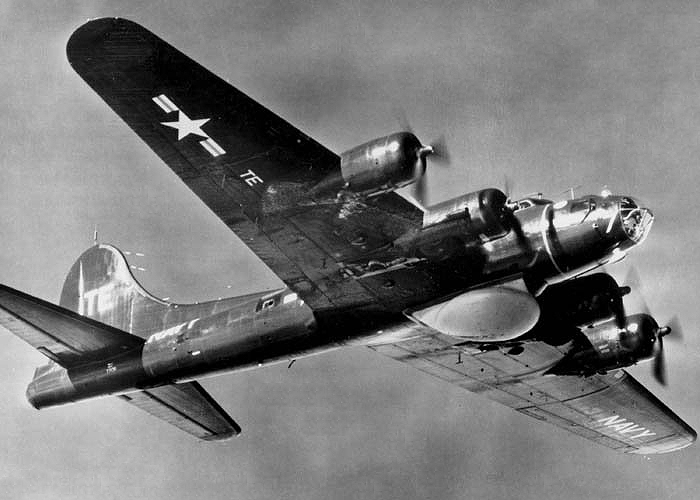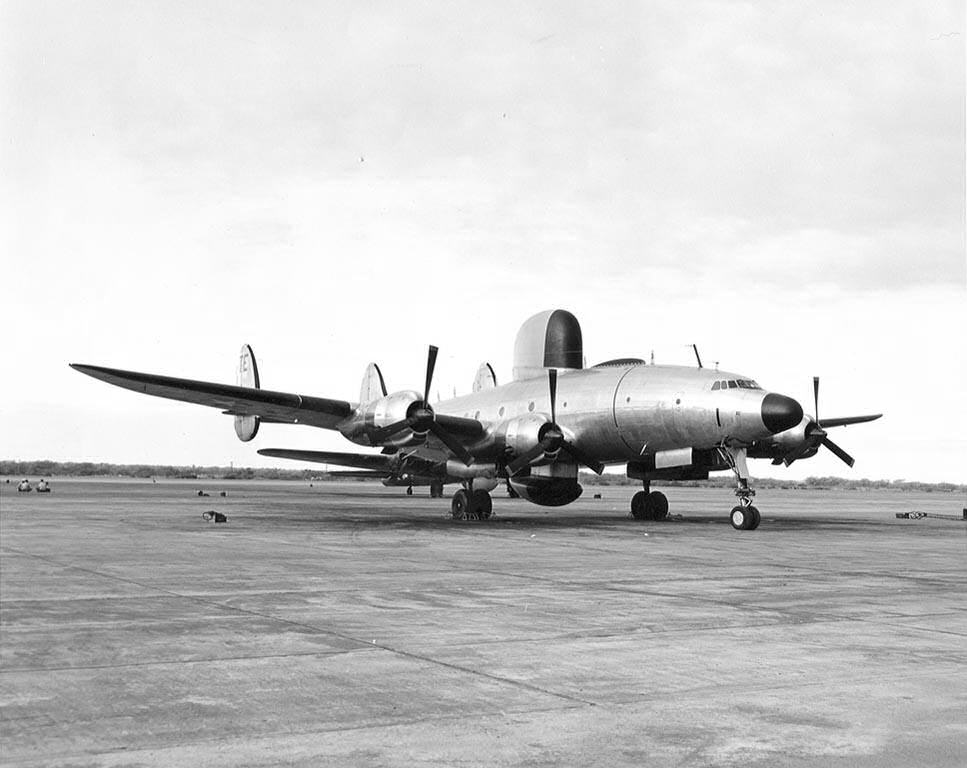|
Texas Raiders
''Texas Raiders'' was an American Boeing B-17 Flying Fortress, a B-17G-95-DL built by Douglas-Long Beach. In 1967, it was purchased by the Commemorative Air Force’s Gulf Coast Wing "Texas Raiders" group, which maintained and flew the aircraft out of Conroe-North Houston Regional Airport in Conroe, Texas. The aircraft was destroyed on November 12, 2022, by a mid-air collision with a P-63 Kingcobra at an air show at Dallas Executive Airport, Texas, that killed all five occupants and the P-63 pilot. History of the aircraft Early history The plane was built in 1944 by Douglas Aircraft Corporation at the Long Beach, California, plant under license from Boeing. One of the last 20 B-17s built by Douglas, it was delivered to the U.S. Army Air Forces as B-17G-95-DL 44-83872 on July 12, 1945. On July 21, 1945, all 20 were transferred to the U.S. Navy to serve as PB-1W patrol bombers. 44-83872 was assigned the U.S. Navy Bureau of Aeronautics Number (BuNo) 77235. The Navy used PB-1W ... [...More Info...] [...Related Items...] OR: [Wikipedia] [Google] [Baidu] |
Gulf Coast Wing
{{Short description, United States historical air display organization The Gulf Coast Wing of the Commemorative Air Force is a United States historical air display organization which formerly included two sub-groups that participate in the display of vintage aircraft and public military history education about military aviation during World War II and beyond. "Texas Raiders" group The Commemorative Air Force's Gulf Coast Wing encompassed the "Texas Raiders" group, who maintained and operated the Boeing B-17G Flying Fortress (former U.S. Navy PB-1W) named ''Texas Raiders'', which 2022 Dallas airshow collision, crashed on November 12, 2022. It was based at the Conroe Regional Airport, located in Conroe, Texas. (Formerly based at David Wayne Hooks Memorial Airport in Tomball, Texas.) See also * History of transport External linksCommemorative Air Force [...More Info...] [...Related Items...] OR: [Wikipedia] [Google] [Baidu] |
Boeing B-17 Flying Fortress
The Boeing B-17 Flying Fortress is a four-engined heavy bomber developed in the 1930s for the United States Army Air Corps (USAAC). Relatively fast and high-flying for a bomber of its era, the B-17 was used primarily in the European Theater of Operations and dropped more bombs than any other aircraft during World War II. It is the third-most produced bomber of all time, behind the four-engined Consolidated B-24 Liberator and the multirole, twin-engined Junkers Ju 88. It was also employed as a transport, antisubmarine aircraft, drone controller, and search-and-rescue aircraft. In a USAAC competition, Boeing's prototype Model 299/XB-17 outperformed two other entries but crashed, losing the initial 200-bomber contract to the Douglas B-18 Bolo. Still, the Air Corps ordered 13 more B-17s for further evaluation, then introduced it into service in 1938. The B-17 evolved through numerous design advances but from its inception, the USAAC (later, the USAAF) promoted the aircraft a ... [...More Info...] [...Related Items...] OR: [Wikipedia] [Google] [Baidu] |
Patrol Bomber
A maritime patrol aircraft (MPA), also known as a patrol aircraft, maritime reconnaissance aircraft, or by the older American term patrol bomber, is a fixed-wing aircraft designed to operate for long durations over water in maritime patrol roles — in particular anti-submarine warfare (ASW), anti-ship warfare (AShW), and search and rescue (SAR). Among other maritime surveillance resources, such as satellites, ships, unmanned aerial vehicles (UAVs) and helicopters, the MPA is an important asset. To perform ASW operations, MPAs typically carry air-deployable sonar buoys as well as torpedoes and are usually capable of extended flight at low altitudes. History First World War The first aircraft that would now be identified as maritime patrol aircraft were flown by the Royal Naval Air Service and the French Aéronautique Maritime during the First World War, primarily on anti-submarine patrols. France, Italy and Austria-Hungary used large numbers of smaller patrol aircraft ... [...More Info...] [...Related Items...] OR: [Wikipedia] [Google] [Baidu] |
EC-121 Warning Star
The Lockheed EC-121 Warning Star was an American airborne early warning and control radar surveillance aircraft operational in the 1950s in both the United States Navy (USN) and United States Air Force (USAF). The military version of the Lockheed L-1049 Super Constellation was used to serve as an airborne early warning system to supplement the Distant Early Warning Line, using two large radomes (a vertical dome above and a horizontal one below the fuselage). It replaced the TBM-3W used by the USN. Some EC-121s were also used for signal intelligence gathering. The EC-121 was introduced in 1954 and phased out in 1978, although a single specially modified EW aircraft remained in USN service until 1982. The USN versions when initially procured were designated WV-1 (PO-1W), WV-2, and WV-3. The USAF Warning Stars served during the Vietnam War both as electronic sensor monitors and as a forerunner to the Boeing E-3 Sentry AWACS. USAF aircrews adopted its civil nickname, "Connie" (d ... [...More Info...] [...Related Items...] OR: [Wikipedia] [Google] [Baidu] |
Lockheed Corporation
The Lockheed Corporation was an American aerospace manufacturer. Lockheed was founded in 1926 and later merged with Martin Marietta to form Lockheed Martin in 1995. Its founder, Allan Lockheed, had earlier founded the similarly named but otherwise-unrelated Loughead Aircraft Manufacturing Company, which was operational from 1912 to 1920. History Origins Allan Loughead and his brother Malcolm Loughead had operated an earlier aircraft company, Loughead Aircraft Manufacturing Company, which was operational from 1912 to 1920. The company built and operated aircraft for paying passengers on sightseeing tours in California and had developed a prototype for the civil market, but folded in 1920 due to the flood of surplus aircraft deflating the market after World War I. Allan went into the real estate market while Malcolm had meanwhile formed a successful company marketing brake systems for automobiles. On December 13, 1926, Allan Lockheed, Jack Northrop, John Northrop, Kenneth K ... [...More Info...] [...Related Items...] OR: [Wikipedia] [Google] [Baidu] |
Browning M2
The M2 machine gun or Browning .50 caliber machine gun (informally, "Ma Deuce") is a heavy machine gun that was designed towards the end of World War I by John Browning. Its design is similar to Browning's earlier M1919 Browning machine gun, which was chambered for the .30-06 cartridge. The M2 uses Browning's larger and more powerful .50 BMG (12.7 mm) cartridge. The design has had many designations; the official U.S. military designation for the current infantry type is Browning Machine Gun, Cal. .50, M2, HB, Flexible. It is effective against infantry, unarmored or lightly armored vehicles and boats, light fortifications, and low-flying aircraft. The gun has been used extensively as a vehicle weapon and for aircraft armament by the United States since the 1930s. It was heavily used during World War II, the Korean War, the Vietnam War, the Falklands War, the Soviet–Afghan War, the Gulf War, the Iraq War, and the War in Afghanistan. It is the primary heavy machine gun of NAT ... [...More Info...] [...Related Items...] OR: [Wikipedia] [Google] [Baidu] |
LORAN
LORAN, short for long range navigation, was a hyperbolic radio navigation system developed in the United States during World War II. It was similar to the UK's Gee system but operated at lower frequencies in order to provide an improved range up to with an accuracy of tens of miles. It was first used for ship convoys crossing the Atlantic Ocean, and then by long-range patrol aircraft, but found its main use on the ships and aircraft operating in the Pacific theater during World War II. LORAN, in its original form, was an expensive system to implement, requiring a cathode ray tube (CRT) display. This limited use to the military and large commercial users. Automated receivers became available in the 1950s, but the same improved electronics also opened the possibility of new systems with higher accuracy. The U.S. Navy began development of Loran-B, which offered accuracy on the order of a few tens of feet, but ran into significant technical problems. The U.S. Air Force worked on a ... [...More Info...] [...Related Items...] OR: [Wikipedia] [Google] [Baidu] |
Instrument Landing System
In aviation, the instrument landing system (ILS) is a precision radio navigation system that provides short-range guidance to aircraft to allow them to approach a runway at night or in bad weather. In its original form, it allows an aircraft to approach until it is over the ground, within a of the runway. At that point the runway should be visible to the pilot; if it is not, they perform a missed approach. Bringing the aircraft this close to the runway dramatically increases the range of weather conditions in which a safe landing can be made. Other versions of the system, or "categories", have further reduced the minimum altitudes, runway visual ranges (RVRs), and transmitter and monitoring configurations designed depending on the normal expected weather patterns and airport safety requirements. ILS uses two directional radio signals, the ''localizer'' (108 to 112 MHz frequency), which provides horizontal guidance, and the ''glideslope'' (329.15 to 335 MHz frequency ... [...More Info...] [...Related Items...] OR: [Wikipedia] [Google] [Baidu] |
Radio Direction Finder
Direction finding (DF), or radio direction finding (RDF), isin accordance with International Telecommunication Union (ITU)defined as radio location that uses the reception of radio waves to determine the direction in which a radio station or an object is located. This can refer to radio or other forms of wireless communication, including radar signals detection and monitoring (ELINT/ESM). By combining the direction information from two or more suitably spaced receivers (or a single mobile receiver), the source of a transmission may be located via triangulation. Radio direction finding is used in the navigation of ships and aircraft, to locate emergency transmitters for search and rescue, for tracking wildlife, and to locate illegal or interfering transmitters. RDF was important in combating German threats during both the World War II Battle of Britain and the long running Battle of the Atlantic. In the former, the Air Ministry also used RDF to locate its own fighter group ... [...More Info...] [...Related Items...] OR: [Wikipedia] [Google] [Baidu] |
Radar
Radar is a detection system that uses radio waves to determine the distance (''ranging''), angle, and radial velocity of objects relative to the site. It can be used to detect aircraft, ships, spacecraft, guided missiles, motor vehicles, weather formations, and terrain. A radar system consists of a transmitter producing electromagnetic waves in the radio or microwaves domain, a transmitting antenna, a receiving antenna (often the same antenna is used for transmitting and receiving) and a receiver and processor to determine properties of the objects. Radio waves (pulsed or continuous) from the transmitter reflect off the objects and return to the receiver, giving information about the objects' locations and speeds. Radar was developed secretly for military use by several countries in the period before and during World War II. A key development was the cavity magnetron in the United Kingdom, which allowed the creation of relatively small systems with sub-meter resolution. Th ... [...More Info...] [...Related Items...] OR: [Wikipedia] [Google] [Baidu] |
Anti-submarine Warfare
Anti-submarine warfare (ASW, or in older form A/S) is a branch of underwater warfare that uses surface warships, aircraft, submarines, or other platforms, to find, track, and deter, damage, or destroy enemy submarines. Such operations are typically carried out to protect friendly shipping and coastal facilities from submarine attacks and to overcome blockades. Successful ASW operations typically involved a combination of sensor and weapon technologies, along with effective deployment strategies and sufficiently trained personnel. Typically, sophisticated sonar equipment is used for first detecting, then classifying, locating, and tracking a target submarine. Sensors are therefore a key element of ASW. Common weapons for attacking submarines include torpedoes and naval mines, which can both be launched from an array of air, surface, and underwater platforms. ASW capabilities are often considered of significant strategic importance, particularly following provocative instan ... [...More Info...] [...Related Items...] OR: [Wikipedia] [Google] [Baidu] |


.jpg)






